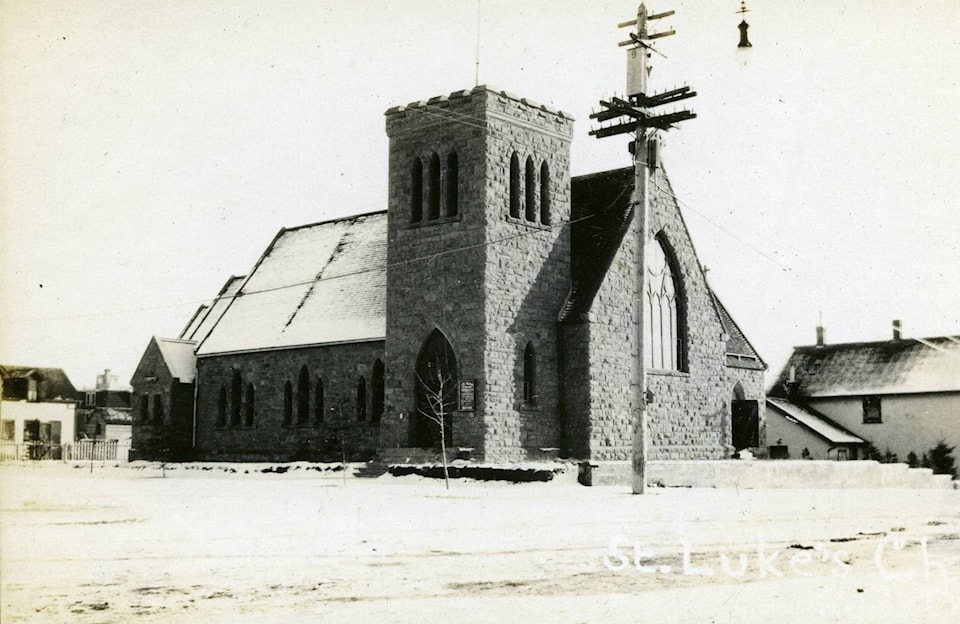Another Christmas will soon be upon us. Christmas is generally a time for widespread festive activities, particularly joyous gatherings of families and friends. It is currently unclear how much impact the current Covid pandemic will have on the usually seasonal celebrations. However, it is quite certain that Christmas 2020 will be much more low-keyed than most Christmas’s in the past.
For comparison, this is a time to reflect back 102 years ago, to December 1918, when the community marked a Christmas in the immediate aftermath of one of the worst wars in history and in the middle of a one of the worst pandemics ever recorded, the Spanish influenza.
The First World War had been devastating to Red Deer and central Alberta. 118 young men from the city and surrounding district lost their lives in the great conflict. A great many more suffered severe injuries, physically and/or mentally. A special hospital for veterans with “shell shock” (P.T.S.D.), opened on Red Deer’s East Hill.
Hence, the community greeted the end of the War, on November 11, 1918, with as much of a sense of relief as one of rejoicing. The profound mourning over the terrible toll of the war continued, even though the fighting had come to an end.
While some veterans had been able to return home, most were still overseas. With so many in active service, it took a long time and a lot of paperwork to arrange “demobilization” (discharge from the military). It was not until the first few months of 1919 that the majority of veterans were finally able to make it home and to be reunited with their loved ones.
A large number were still in military hospitals overseas, waiting for their wounds to heal sufficiently that they could survive the long journey back to Canada. Even more were hospitalized with the new scourge that broke out just as the war was drawing to a close – the deadly Spanish ‘flu.
Some of those who made it home brought the disease back with them. Consequently, by mid-October 1918, the ‘flu was rampant in central Alberta. Tragically, the large celebrations of the end of the war on November 11 had spread the ʼflu even more.
With so many sick and dying in the community and the widespread quarantines, there was an eerie quiet in the community. All schools, most churches and almost all public gathering places were closed. One of the last things on people’s minds was the planning of Christmas socials and the start to Christmas shopping.
By the second week of December, it appeared that the ‘flu epidemic was starting to abate. Many of the quarantines began to be lifted. People started to become a bit more active again.
On December 8, special Thanksgiving church services were held to mark the return of peace, the first religious services in several weeks. However, a decision was made to keep the schools closed until January 6.
Merchants offered attractive sales to encourage people to buy at least a few Christmas presents. However, overall sales remained slow. Some merchants began to advertise that if people could not manage gifts for Christmas, they could consider New Year’s gifts as there was still a lot of stock on hand.
Virtually all churches and organizations cancelled their annual children’s Christmas parties and other social gatherings. Meanwhile, social welfare groups encouraged people to contribute for Christmas hampers for the families of veterans and for those who had been hard hit by the ‘flu.
Fortunately, while there were many significant challenges during the month, the weather remained relatively warm and dry. There was some snow on December 4 and 22. Temperatures were often at, or only slightly below, freezing.
Churches organized their Christmas Eve and Christmas Day services in the traditional fashion. Nevertheless, the expectation was that attendance would be significantly lower than usual. Unfortunately, the local Medical Health Officer, Dr. Henry George, reported another increase in ‘flu cases in the days between Christmas and New Year’s.
Despite all of the adversities that had beset the community, people still wished each other a “Merry Christmas” with heartfelt wishes for a much better New Year in 1919.
Red Deer historian Michael Dawe’s column appears Wednesdays.
